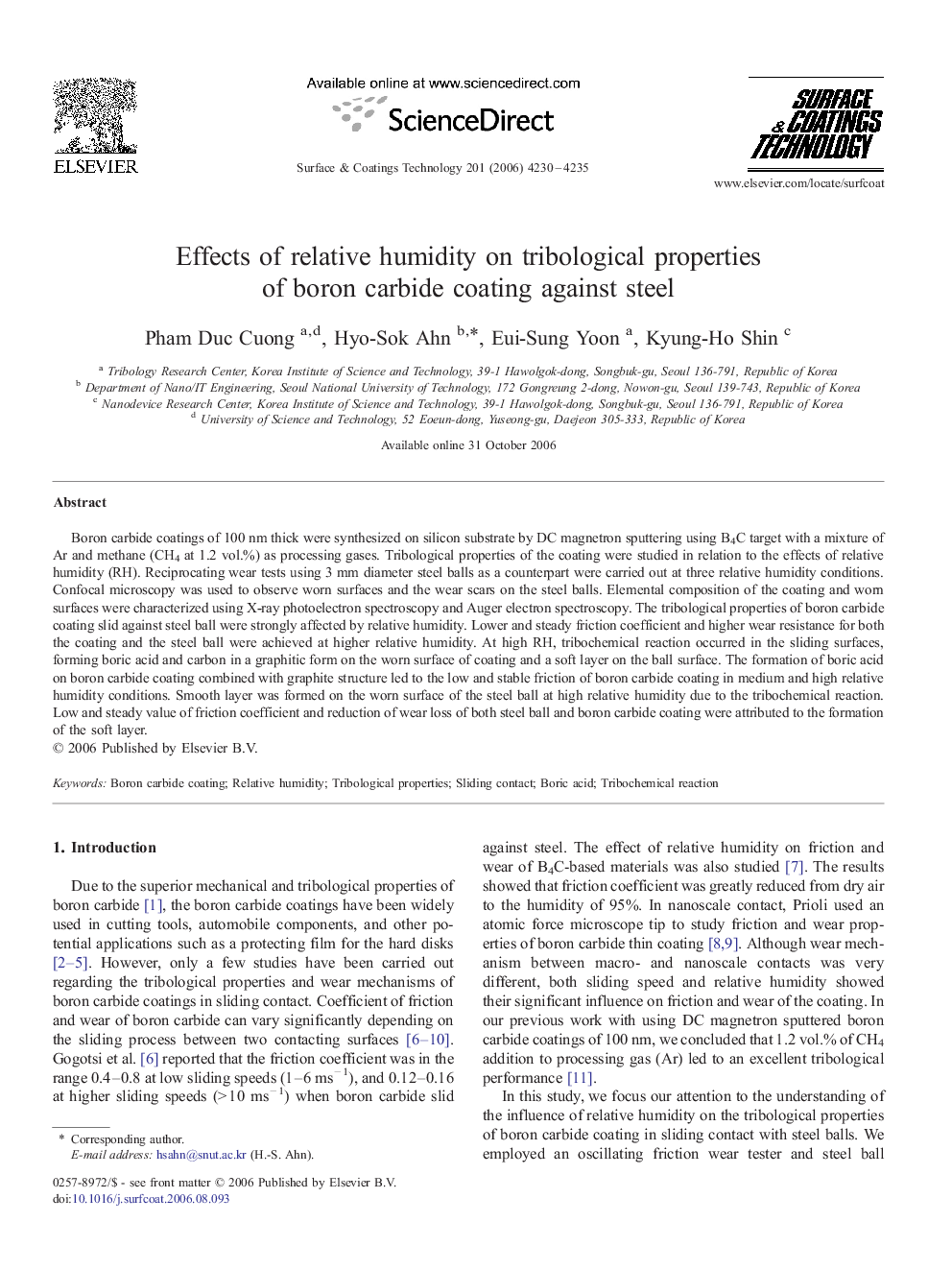| Article ID | Journal | Published Year | Pages | File Type |
|---|---|---|---|---|
| 1663241 | Surface and Coatings Technology | 2006 | 6 Pages |
Boron carbide coatings of 100 nm thick were synthesized on silicon substrate by DC magnetron sputtering using B4C target with a mixture of Ar and methane (CH4 at 1.2 vol.%) as processing gases. Tribological properties of the coating were studied in relation to the effects of relative humidity (RH). Reciprocating wear tests using 3 mm diameter steel balls as a counterpart were carried out at three relative humidity conditions. Confocal microscopy was used to observe worn surfaces and the wear scars on the steel balls. Elemental composition of the coating and worn surfaces were characterized using X-ray photoelectron spectroscopy and Auger electron spectroscopy. The tribological properties of boron carbide coating slid against steel ball were strongly affected by relative humidity. Lower and steady friction coefficient and higher wear resistance for both the coating and the steel ball were achieved at higher relative humidity. At high RH, tribochemical reaction occurred in the sliding surfaces, forming boric acid and carbon in a graphitic form on the worn surface of coating and a soft layer on the ball surface. The formation of boric acid on boron carbide coating combined with graphite structure led to the low and stable friction of boron carbide coating in medium and high relative humidity conditions. Smooth layer was formed on the worn surface of the steel ball at high relative humidity due to the tribochemical reaction. Low and steady value of friction coefficient and reduction of wear loss of both steel ball and boron carbide coating were attributed to the formation of the soft layer.
